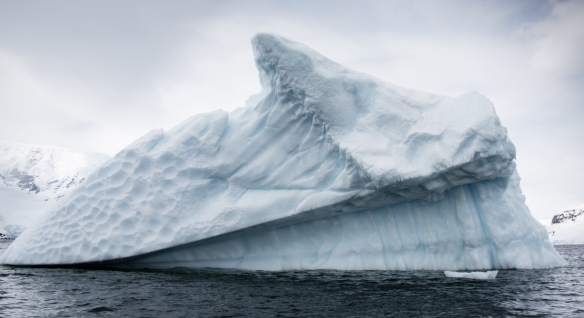
Andvord Bay iceberg, Antarctica
Our first Zodiac rides in Antarctica (after sailing south from Deception Island in the South Shetland Islands through the Errera channel) were in Andvord Bay, a bay 9 nautical miles (17 km) long and 3 nautical miles (6 km) wide, which lies along the west coast of Graham Land on the Antarctic Peninsula (the tip of Antarctica closest to Argentina). It was discovered by the Belgian Antarctica Expedition, 1897–99, under Adrien de Gerlache, and named by him for Rolf Andvord, Belgian counsul at Christiana (Oslo) at that time.

Andvord Bay glacier face, Antarctica
After our Zodiac rides, the ship sailed on to an anchorage spot in Andvord Bay, adjacent to Neko Harbor and the large glacier flowing into the harbor.
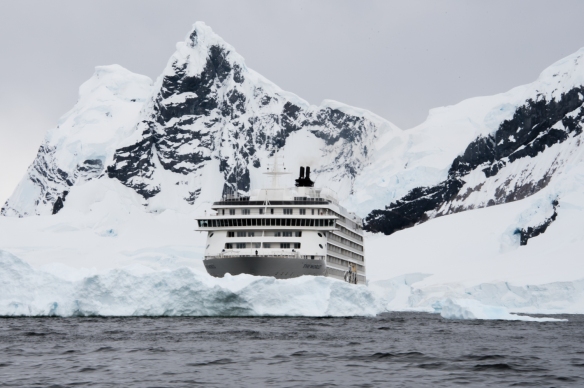
Andvord Bay icebergs surrounding our ship, Antarctica

Panorama of Neko Harbor from the glacier, Antarctica
Neko Harbor was named after the whale factory ship, Neko, which operated along the Antarctica Peninsula in 1911-1912 and again in 1923-1924. This beautiful embayment in the coast of Andvord B ay is a breeding site for Gentoo Penguins, Shuas (birds which are mortal enemies of the penguins), Snowy Sheathbills and Kelp Gulls.

Neko Harbor Gentoo Penguin rookery, Antarctica
Our landing ashore at Neko Harbor was our first opportunity to set foot on the Antarctic continent!

View of Neko Harbor from atop the glacier, Antarctica

The intrepid explorer and your blogger after hiking up the glacier, overlooking Neko Harbor, Antarctica
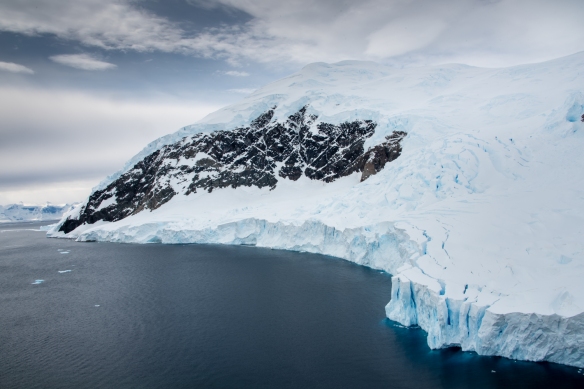
Neko Harbor mountain and glacier, Antarctica
“Antarctica has this mythic weight. It resides in the collective unconscious of so many people, and it makes this huge impact, just like outer space. It’s like going to the moon.” ― Jon Krakauer

Neko Harbor glacier face, Antarctica

Storm raging over the mountains overlooking Neko Harbor, Antarctica

Two Gentoo Penguins on the beach at Neko Harbor, Antarctica
“The Gentoo Penguin is easily recognized by the wide white stripe extending like a bonnet across the top of its head and its bright orange-red bill. They have pale whitish-pink webbed feet and a fairly long tail – the most prominent tail of all penguins. Chicks have grey backs with white fronts. As the Gentoo Penguin waddles along on land, its tail sticks out behind, sweeping from side to side, hence the scientific name Pygoscelis, which means “rump-tailed”. Gentoos reach a height of 20 to 35 inches (51 to 90 cm), making them the third-largest species of penguin after the two giant species, the Emperor Penguin and the King Penguin.” — Wikipedia
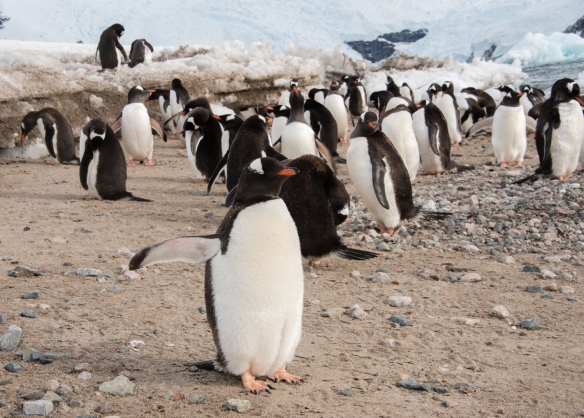
Gentoo Penguin colony on the beach at Neko Harbor, Antarctica
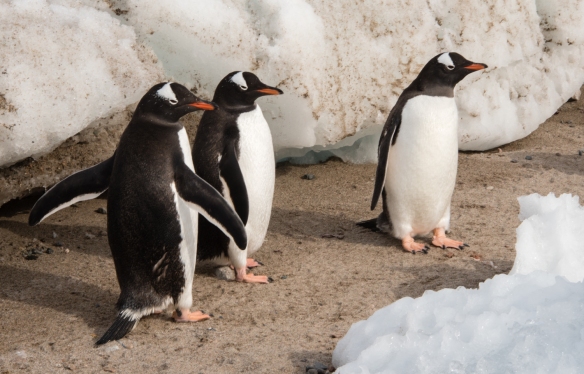
Three Gentoo Penguins on the beach at Neko Harbor, Antarctica

Cruising towards the Lemaire Channel from Neko Harbor at 11 pm, Antarctica
